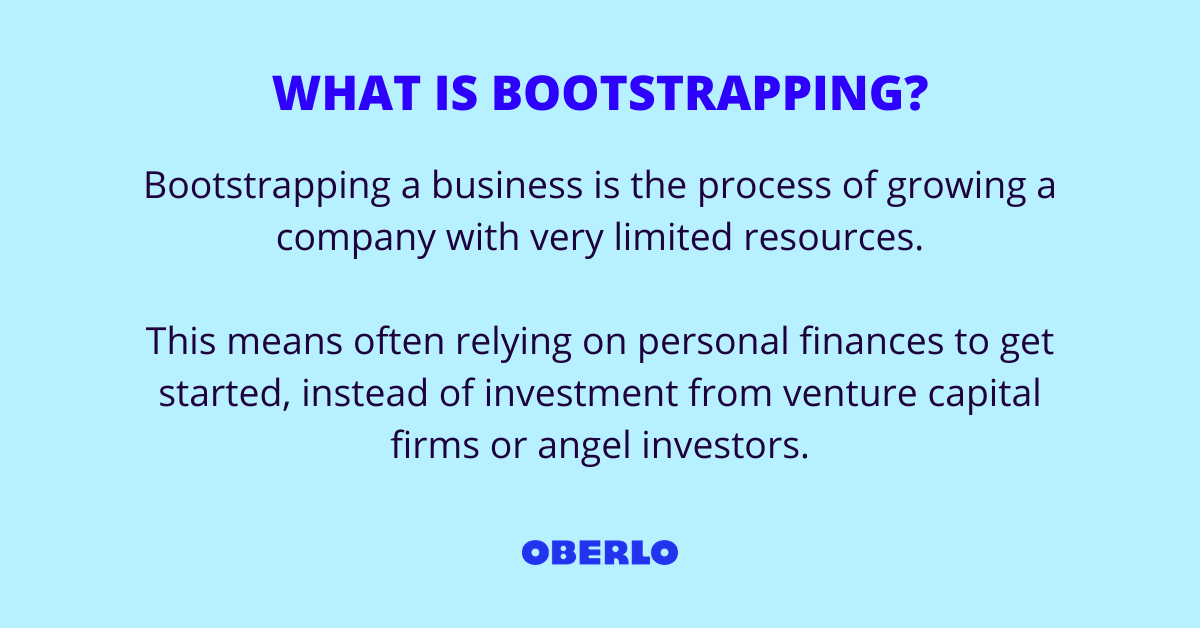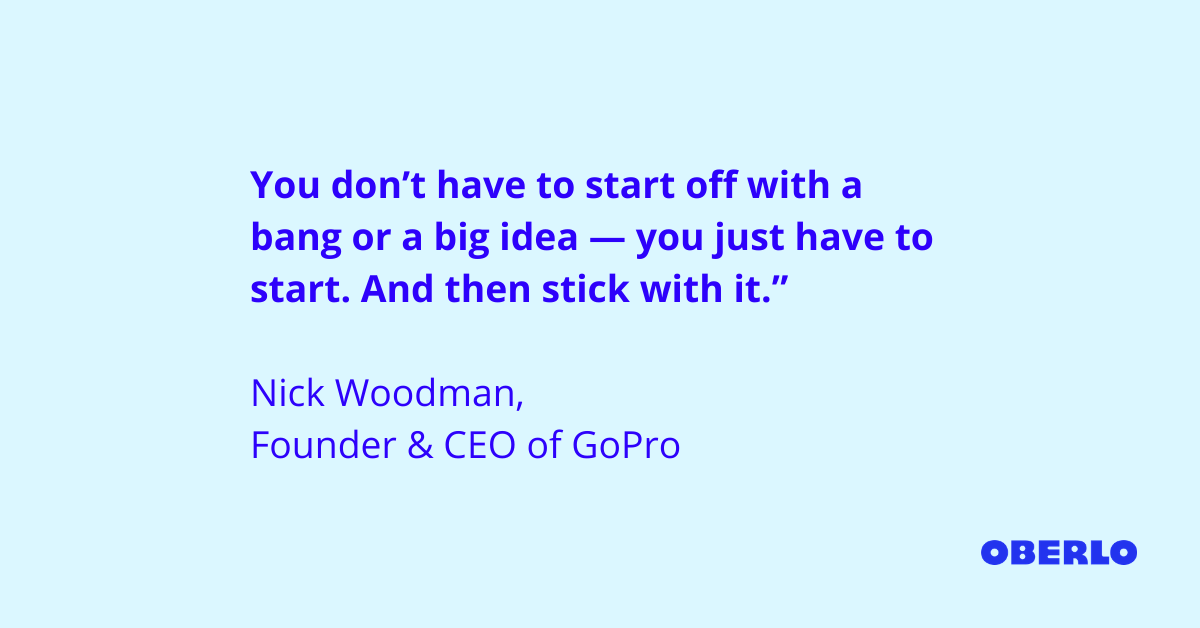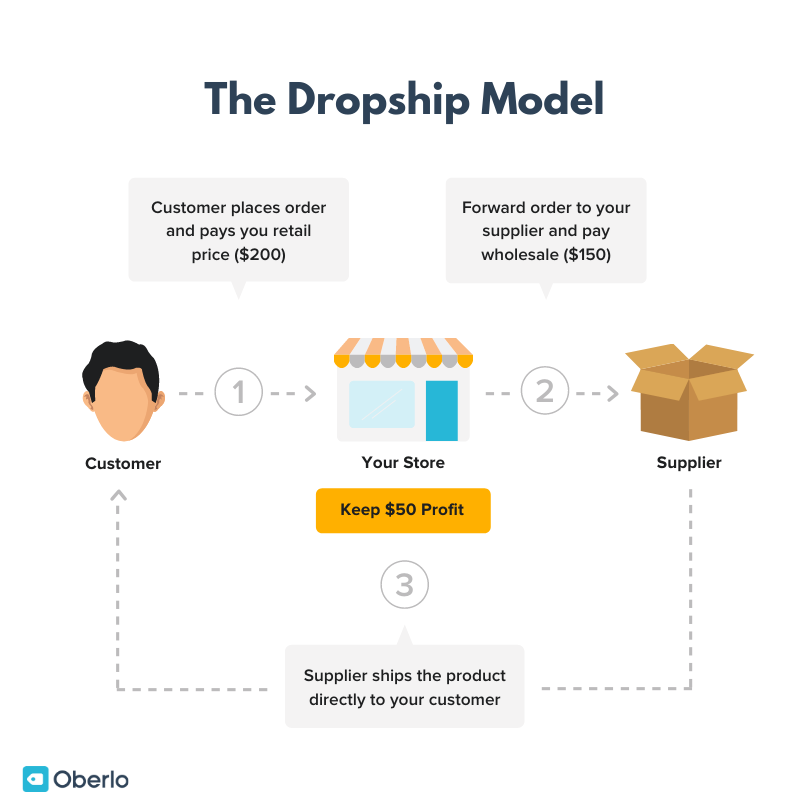Starting a business can be tough.
It takes a lot of resources to develop your offering, understand your target market, and generate consistent sales.
As a result, many people believe that they must find wealthy investors who can front buckets of cash to get the business off the ground.
But this simply isn’t true.
If you want to start a business and you’re strapped for cash, there’s a way. Bootstrapping a business is a tried and true way of building a successful company.
But what is bootstrapping? And how can you start a bootstrapped company.
Read on to find out.
Want to Start a Dropshipping Business?
Our Dropshipping 101 course contains all the important information you need to know before you start your business
Start Dropshipping TodayWhat is Bootstrapping a Business?

Bootstrapping a business is the process of starting and growing a company with very limited resources. A bootstrap entrepreneur will often rely on their personal finances to get started, instead of investment from venture capital firms or angel investors.
From the very beginning, a bootstrapped business relies almost entirely on customers to provide the money necessary to grow the business.
Why Is It Called Bootstrapping?
You’ve probably heard the old saying, “pull yourself up by your bootstraps.” This phrase comes from the old boots with straps on the sides that help people pull them on.
Over time, the idea of lifting yourself off the ground by your bootstraps became a widely used metaphor for the act of improving your life situation by your own efforts.
A Successful Bootstrapping Business Example
The action camera company GoPro is an excellent example of bootstrapping a business.
Nick Woodman started this bootstrapped business with $10,000 that he earned from selling bead and shell belts out of his van.
Woodman designed the first product, created the prototype, arranged the manufacturing, and sold it to suppliers himself – all while living at home with his parents.
GoPro went on to become a billion-dollar company when its initial public offering (IPO) was valued at $2.96 billion.
“GoPro’s early days are a great lesson [about] the potential of a humble beginning,” said Woodman. “You don’t have to start off with a bang or a big idea — you just have to start. And then stick with it.”

There are countless successful bootstrapped startups out there. Some are among the largest companies in the world, such as Apple, Dell, and Coca-Cola.
How Bootstrapping a Business Works
If you’re looking to start a bootstrapped company, here are 10 tips to help.
1. Source Some Startup Capital
Perhaps the most challenging part of bootstrapping a business is getting it off the ground.
Most businesses require some form of investment to start, even if it’s very little. For example, you might need to upgrade your computer, purchase inventory, or order parts to create a prototype.
Without outside investment, you’ll need to find a way to pay for these initial necessities. Here are three common ways that you can do this:
- Use your income or savings
- Take out a personal loan or use your line of credit
- Borrow money from friends or family
2. Stick to What You Know and Love
When bootstrapping a business, it’s likely that you won’t have the resources to hire expert help.
This makes starting a business with little experience a recipe for disaster – even if it appears to have great potential.
Insider knowledge of your target audience is vital for success.
So, make sure that you create a company in an industry or niche that you know and love. Plus, this way, you’re already tapping into a network of relevant people who can help you grow your business.
3. Create Something Unique
In the Bootstrappers Workshop, entrepreneur Seth Godin said, “Build and own an asset that’s difficult to reproduce.”
Why?
Because if you create a successful product or service that’s easy to replicate, a larger business with more resources can steal your idea and scale it much faster.
To get around this problem, create an offering that’s unique to you, or that’s difficult to replicate.
4. Choose a Business Model Optimized for Cash Flow
Bootstrapping a business means that it relies on cash flow from sales to fund growth. So, before you dive in, consider choosing a business model that optimizes cash flow.
For example, one-time product sales mean you’ll need a large marketing budget to bring in new customers. On the other hand, subscription services produce recurring revenue without the need for a large marketing budget.
5. Validate Your Business Idea
According to CB Insights, 42 percent of small businesses fail because of a lack of market demand.
In other words, not enough people want what these businesses sell.
So, before you invest what little time and money you have in your small business idea, make sure to validate that your target market is willing to pay for it.
In the words of Seth Godin, “Don’t find customers for your products, find products for your customers.“
6. Keep Costs Low
When you don’t have a war chest of money or investors waiting in the wings to keep your business alive, you need to be frugal.
So, look for ways to reduce costs.
For example, you could avoid renting an office and start your business from home. This is also much easier today with online communication and the popularity of working from home.
According to the Small Business Administration, about 50% of all businesses are home-based. Besides, many famous entrepreneurs started up at home, such as the co-founders of Apple, Steve Jobs and Steve Wozniak.
7. Focus on Profits
When bootstrapping a business, your ability to grow is dependent on reinvesting your profits in the company. So, focus on keeping profits flowing from the get-go.
It’s worth noting that some types of businesses make it easier to generate profits early on.
For example, a brick-and-mortar retail store can cost thousands of dollars each month, whereas a Shopify ecommerce store costs just $29 per month. This makes it easier to start generating profits quickly.
What’s more, the dropshipping model allows you to sell products online without needing to purchase inventory upfront – you only buy products after you’ve already sold them.

8. Play the Long Game
Bootstrapping a business is a long-term strategy.
Funded businesses often aim to scale fast and achieve a profitable exit within 10 years to provide investors with a handsome payout.
However, a bootstrapped business grows slowly and evolves.
To achieve longevity, provide superior customer service, and take some advice from the co-founder of Google, Larry Page: “Always deliver more than expected.”
9. Choose Team Members Carefully
Alongside your customers, your first employees are important investors in your business. So choose them carefully.
The people working with you should understand that if they don’t succeed, the business won’t succeed.
Be a strong leader and goal-oriented. Make sure your team feels appreciated and personally invested in the company’s mission. You could also consider offering your employees equity in the business to inspire loyalty and commitment.
10. Use Organic Marketing Channels
When bootstrapping a business, it can be tempting to use what little money you have to purchase ads through channels such as Facebook advertising.
But remember, play the long game.
Instead of using paid marketing channels, start off using organic marketing strategies that don’t cost money.
For example, if you’re in the business-to-business sector, you could conduct direct outreach via email or social media. And if you’re in the business-to-consumer area, you could create content to rank on search engines and use it in social media campaigns.
Summary: Bootstrapping a Business
Bootstrapping a business is the process of building a company without outside investment. Instead, the bootstrap entrepreneur relies on growing the business by reinvesting business profits.
In summary, here are 10 tips to help you bootstrap your business to success:
- Source a small amount of money to get started
- Create a business you are passionate about
- Create a unique product or service that is difficult for competitors to replicate
- Choose a business model that helps to produce positive cash flow
- Conduct real-world tests to ensure that there’s demand for your offering
- Keep your costs low and budget carefully
- Focus on producing a profit from the get-go and keep reinvesting in the business
- Play the long game and focus on serving your target market to the best of your abilities
- Choose team members carefully and ensure they feel invested in the business
- Focus on organic marketing at first, such as social media marketing and SEO
To finish up, here’s a quote from Ryan Holmes, the co-founder of Hootsuite: “When in doubt, bootstrap.”




